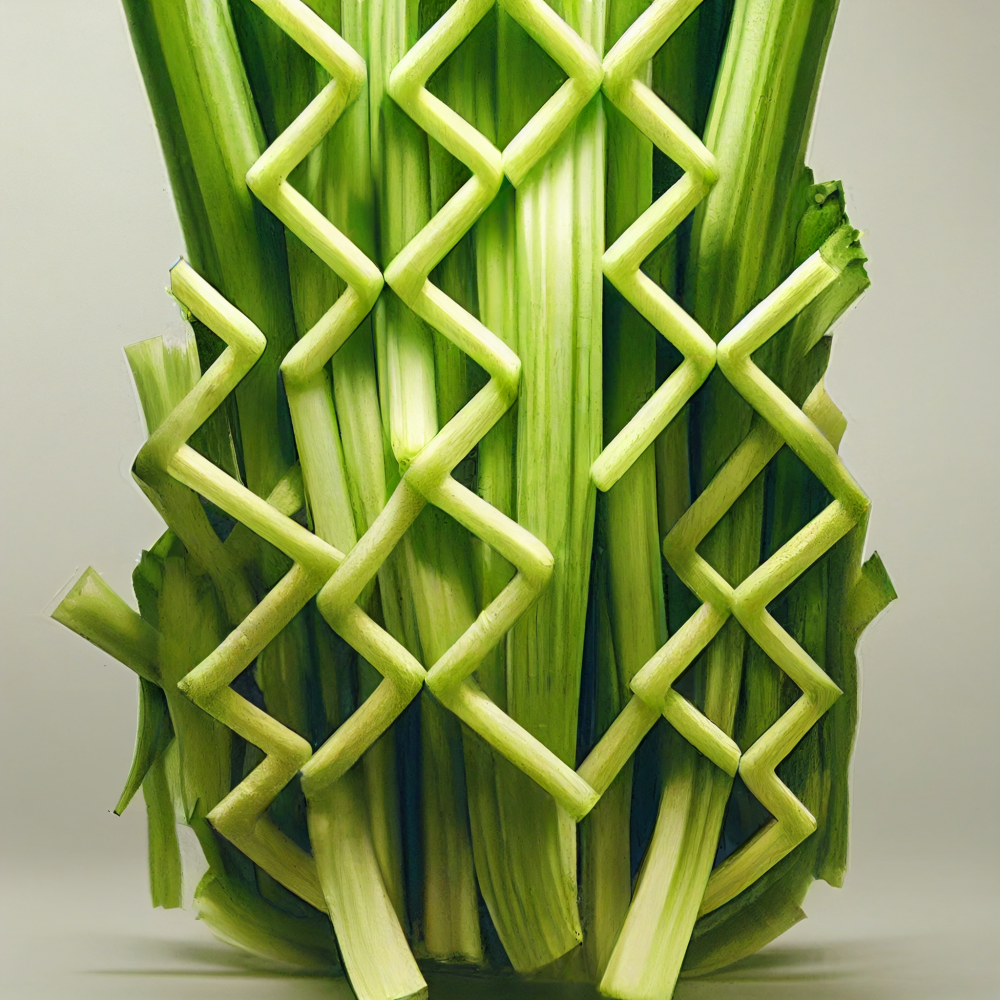Celery: Difference between revisions
Amwelladmin (talk | contribs) No edit summary Tags: Mobile edit Mobile web edit |
Amwelladmin (talk | contribs) No edit summary |
||
| (10 intermediate revisions by the same user not shown) | |||
| Line 1: | Line 1: | ||
{{a|drafting|{{image|Celery|png|Some multidimensional celery, yesterday}}}}{{d|Celery|/ˈsɛləri/|n|}} | |||
{{ | A good {{tag|metaphor}} for bad legal writing: it does no harm, but no good either<ref>which is a {{tag|paradox}} itself, for words that do no harm but do no good get in the way, which is ''in itself'' harmful.</ref>. If you go to the store, [[celery]] is on your list, and they have none, it is not something you feel the need to [[I'm not going to die in a ditch about it|die in a ditch about]]. In a way “cabbage” is a better term, because it has worse connotations, but dammit the JC ''likes'' cabbage. Fried in olive oil with carraway seeds, it goes well with bangers and mash. | ||
[[Celery]] comes in all shapes and sizes, and can go [[limp celery|limp]] if left unattended. | |||
====A word on thermic energy and the calorific negativity==== | |||
From the perspective of metaphorical purity it is, alas, '''not''' true that eating celery burns more calories than it provides. It is not a [[negative-calorie food]]. A stalk of celery yields 6 calories, but we expends only half a calorie digesting it. Thus, celery has a “thermic effect” of about 8%, and would need 100% or more to generate “negative calories”. | |||
Despite its recurring popularity in dieting guides, there is no scientific evidence supporting the idea that ''any'' food is calorically negative. Sorry to prick that bubble, fellahs. | |||
{{sa}} | |||
*[[Calorie-negative foods]] | |||
{{ref}} | |||
Latest revision as of 14:41, 8 September 2022
|
The JC’s guide to writing nice.™
|
Celery
/ˈsɛləri/ (n.)
A good metaphor for bad legal writing: it does no harm, but no good either[1]. If you go to the store, celery is on your list, and they have none, it is not something you feel the need to die in a ditch about. In a way “cabbage” is a better term, because it has worse connotations, but dammit the JC likes cabbage. Fried in olive oil with carraway seeds, it goes well with bangers and mash.
Celery comes in all shapes and sizes, and can go limp if left unattended.
A word on thermic energy and the calorific negativity
From the perspective of metaphorical purity it is, alas, not true that eating celery burns more calories than it provides. It is not a negative-calorie food. A stalk of celery yields 6 calories, but we expends only half a calorie digesting it. Thus, celery has a “thermic effect” of about 8%, and would need 100% or more to generate “negative calories”.
Despite its recurring popularity in dieting guides, there is no scientific evidence supporting the idea that any food is calorically negative. Sorry to prick that bubble, fellahs.
